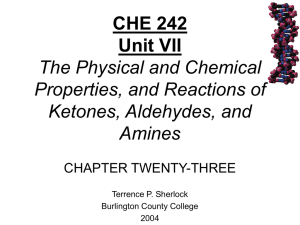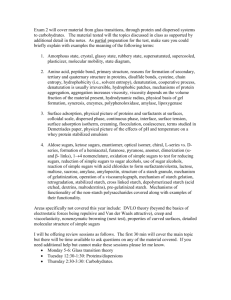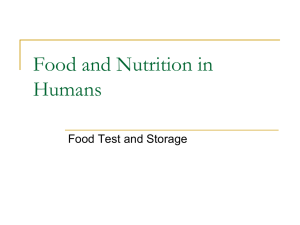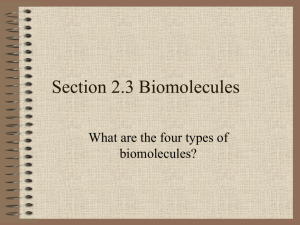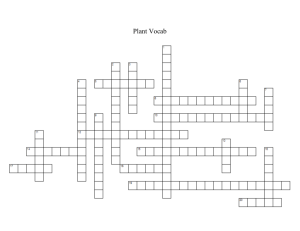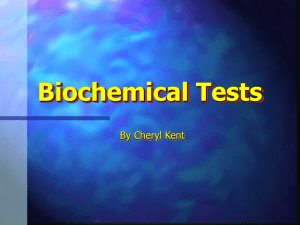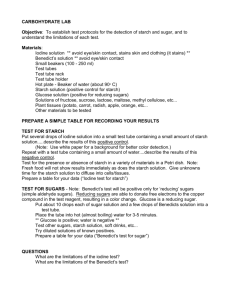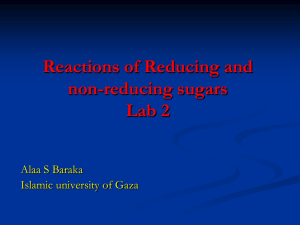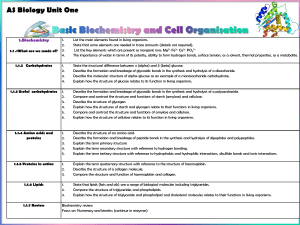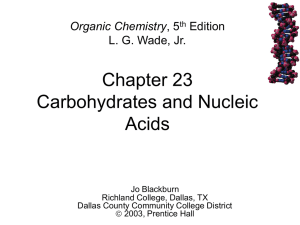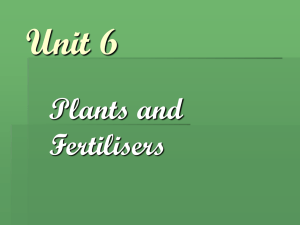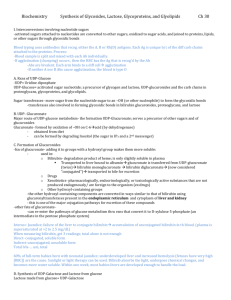Reducing sugars * testing for mono and some di.
advertisement
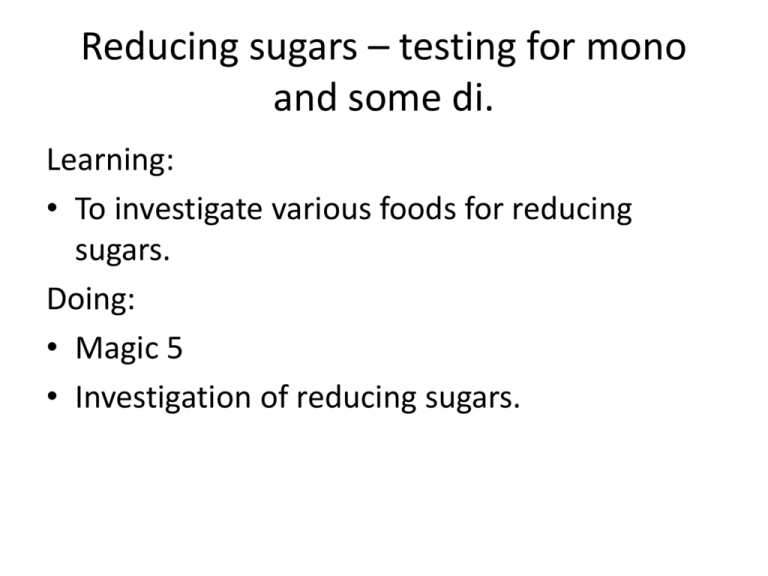
Reducing sugars – testing for mono and some di. Learning: • To investigate various foods for reducing sugars. Doing: • Magic 5 • Investigation of reducing sugars. Magic 5 • Write 5 things you remember about carbohydrates from last lesson. Quick quiz • Put your answers on the work sheet. Disaccharides • Glucose linked to glucose ---• Glucose linked to fructose ----• Glucose linked to galactose ------ Testing for reducing sugars • All mono and some disaccharides are reducing sugars. • This means that the sugar can donate electrons to another chemical (benedict's or copper II sulphate). • When reducing sugars are present they form a brick red precipitate. Reducing sugars • All reducing sugars have an aldehyde group, this is what allows the reduction (loss) of electrons to the copper sulphate. How to test for reducing sugars. 1) Add 2cm of the food sample to be tested in to a test tube. It needs to be in liquid form so get grinding! 2) Add an equal volume of benedict’s reagent. 3) Heat in a water bath for 5 minutes. 4) Write your results in a table. Reducing sugar results. Questions 1) How could you compare concentrations of reducing sugars, other than colour change? 2) Explain why it is not possible to distinguish between very concentrated samples? Testing for non-reducing sugars • If the sample has not changed colour then it is a non-reducing sugar. • Add the non reducing sample to 2cm3 of HCl and heat for 5 mins (dilute HCl hydrolyses any disaccharide present). • Add sodium hydrogen carbonate to neutralise the acid. Test with pH paper. • Retest with benedict’s in a water bath. • If a non reducing sugar is present it will now turn orange red. Digestion of carbohydrates Learning: • To explain how starch digestion is complete. • To explain lactose intolerance. Use the keywords to explain starch digestion • Teeth, large surface area. • Salivary amylase, hydrolysis, maltose, mineral salt, pH. • Stomach, acid, denatures • Small intestine, pancreatic juice. • Pancreatic amylase, hydrolysis, maltose, alkaline salts, pancreas, intestinal wall, pH • Small intestine, epithelial lining, maltase, alpha glucose. Lactose intolerance • Lactose is made up of glucose and galactose and is hydrolysed by lactase. • Babies produce large amounts of lactase as their only food source is milk. As we get older the lactase levels decrease, in some the levels reduce to nothing – leading to lactose intolerance. • What do you think the symptoms of lactose intolerance are? Digestion • 7 (a) Describe the role of the enzymes of the digestive system in the complete breakdown of starch. (5 marks) • 7 (b) Describe the processes involved in the absorption of the products of starch digestion. (5 marks)
